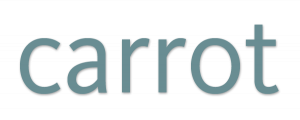What is blockchain?
A blockchain is list of records that’s linked, and can be added to, via cryptography. Each ‘block’ of data contains transaction data and a timestamp.
Harvard Business Review defines blockchain as a “peer-to-peer network that sits on top of the internet”. Because previous blocks in the chain cannot be modified, the system is resistant to tampering, and therefore can act as a reliable ledger between two parties.
“blockchain could dramatically reduce the cost of transactions. It has the potential to become the system of record for all transactions. If that happens, the economy will once again undergo a radical shift, as new, blockchain-based sources of influence and control emerge.” — HBR
Why do we need blockchain?
While the digital economy is thriving, one side effect of taking business beyond the face-to-face interaction is the increased need for security and auditable evidence.
Sixty years ago, our grandparents often conducted a lot of daily business based on the trust they built up by seeing a person every day. For example, they may have had an account at the local butchers, or had a verbal agreement with their local bank manager.
However, in a digital world where we’re continually doing business with strangers, we need a secure and trusted way to do business.
How is blockchain being used?
- Santander is using blockchain for international money transfers. Meanwhile, IBM wants to develop a blockchain-based service that will be a competitor to the SWIFT payment system.
- De Beers is using blockchain to track diamonds from miners to retailers as a way to guarantee authenticity.
- Capgemini expects healthcare providers to start using blockchain. It can be used to track patient cases in the healthcare system, including ensuring that the right case history reaches the right specialists and tracking the payment process in nations that charge for healthcare.
- Indorse is a professional networking site where people with certain tech skills can validate their skills via blockchain certificates (unlike LinkedIn, which has no real skill validation beyond recommendations). The content they create on the site is recorded as their work via blockchain, and Indorse rewards them with tokens for the content their contributions (unlike more established social networks which say that they own the content posted by users).
- The Plastic Bank uses blockchain to help tackle plastic waste. People collect the waste and exchange it in local centres, either for essentials like food, water or phone credits or for digital currency. The initiative, launched in Haiti, uses blockchain to record that an exchange has taken place, helping to ensure that everyone involved in the project can trust that transactions have taken place.
The blockchain market is predicted to be worth $60.7bn by 2024. It’s easy to see why. Blockchain has significant potential for improving the security and fidelity of contracts, transferring money and accounts (and allowing people with no traditional bank accounts greater access to the economy). It also offers a way for people to establish ownership of digital content.
It will be interesting to see how banks; insurance providers and other established industries adapt to blockchain. Will they take advantage of the benefits it can bring (such as fraud prevention and error reduction)? Or will they see it as a threat? Innovative organisations are already starting to explore what blockchain has to offer.
–
Featured image by Charles Deluvio 🇵🇭🇨🇦 on Unsplash




